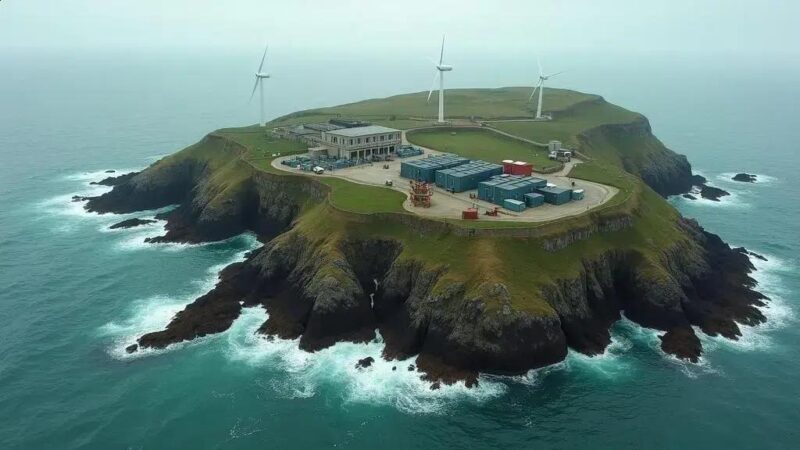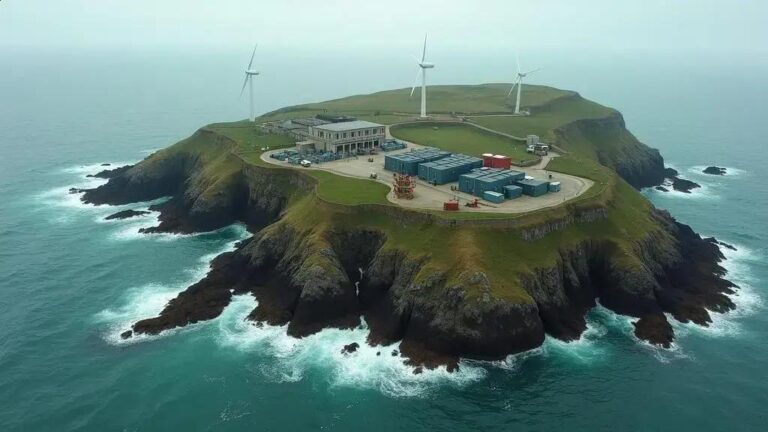Bitcoin island talk has a new contender: Alderney is pitching tidal energy, low taxes and a pro-Bitcoin stance to attract miners and startups — but can this small island turn vision into reality?
Alderney’s pitch: geography, tax breaks and open governance
Bitcoin island plans look to Alderney for its location, tax perks and open governance. The island sits in the English Channel near the UK and Europe. It has deep-water ports and reliable fiber links that ease hardware moves and data flow.
Location and infrastructure
Alderney has small ports that handle shipping containers with mining gear. There are available sites near the coast and power lines. Strong tidal currents offer a chance for local renewable energy. Fiber cables connect the island to major networks for low-latency links.
Tax incentives and business environment
The island offers low tax rates and simple company rules. A tax break means lower or delayed taxes for qualifying firms. Officials promote streamlined licensing and lower corporate fees to cut startup costs. Those incentives can make mining and blockchain projects more affordable.
Open governance and regulatory stance
Local leaders favor quick decisions and clear rules for businesses. A regulatory sandbox can let crypto services test products in a controlled setting. A sandbox is a supervised space to try ideas with limited risk. Transparency and faster approvals help attract companies that value legal certainty.
Investors still need to check power capacity, permit timelines and local community impact. Those practical steps matter before any major build-out.
Tidal power and mining: renewable energy as a competitive edge
Tidal power can give mining operations a steady, low-carbon electricity source on islands like Alderney.
Benefits for mining
Tidal turbines deliver predictable energy, tied to tides rather than weather or sun.
This predictability helps miners plan power use and reduce operation costs overall.
How tidal works
Tidal turbines are underwater rotors that spin with the flow of water.
They convert water movement into electricity using a turbine and generator assembly.
Capacity factor shows how much power runs over time compared to peak output.
Tidal energy is less intermittent than wind or solar, due to fixed cycles.
Storage and grid
Tidal alone may not match continuous mining power needs every hour of the day.
Battery storage stores extra energy for peak demand and helps balance supply.
Hydrogen or pumped storage can also smooth output over long periods of time.
Costs and economics
Upfront costs for tidal turbines and grid work are initially high for developers.
Running costs drop because water currents are free and reliable fuel for miners.
Lower energy prices can improve mining margins and attract investment over time.
Site planning and permits
Developers must study tides, seabed conditions and marine life carefully before building.
Permits often involve fisheries, shipping lanes and coastal regulators and local agencies.
Community support matters because locals worry about noise, views and fishing impacts.
How miners can start
Start with a feasibility study to map power, costs and permits clearly.
Pilot projects let teams test turbines and mining rigs at small scale.
Partner with local utilities for grid access and shared infrastructure costs early.
Measure full costs, uptime and environmental data regularly during pilots, then refine plans.
Regulation, education and the search for a strategic Bitcoin partner
Bitcoin firms often need clear rules and trusted local partners to grow safely.
Regulatory clarity
Regulators should publish clear, consistent rules so companies know what to expect.
A regulatory sandbox lets firms test new services under close supervision and limits.
Education and workforce
Local schools and colleges can teach skills for miners and data center teams.
Short courses, apprenticeships and bootcamps speed up local training and build trust.
Strategic partners
Energy firms, utilities and hosting providers are key partners for any project.
A power purchase agreement (PPA) is a long contract to buy electricity at set prices.
Banks, exchanges and insurers help with finance, custody and risk controls for projects.
Due diligence and community
Investors must check power supply, permits, environmental rules and community views first.
Open meetings and clear benefit plans make locals more likely to support projects.
Fonte: Bitcoinist.com








